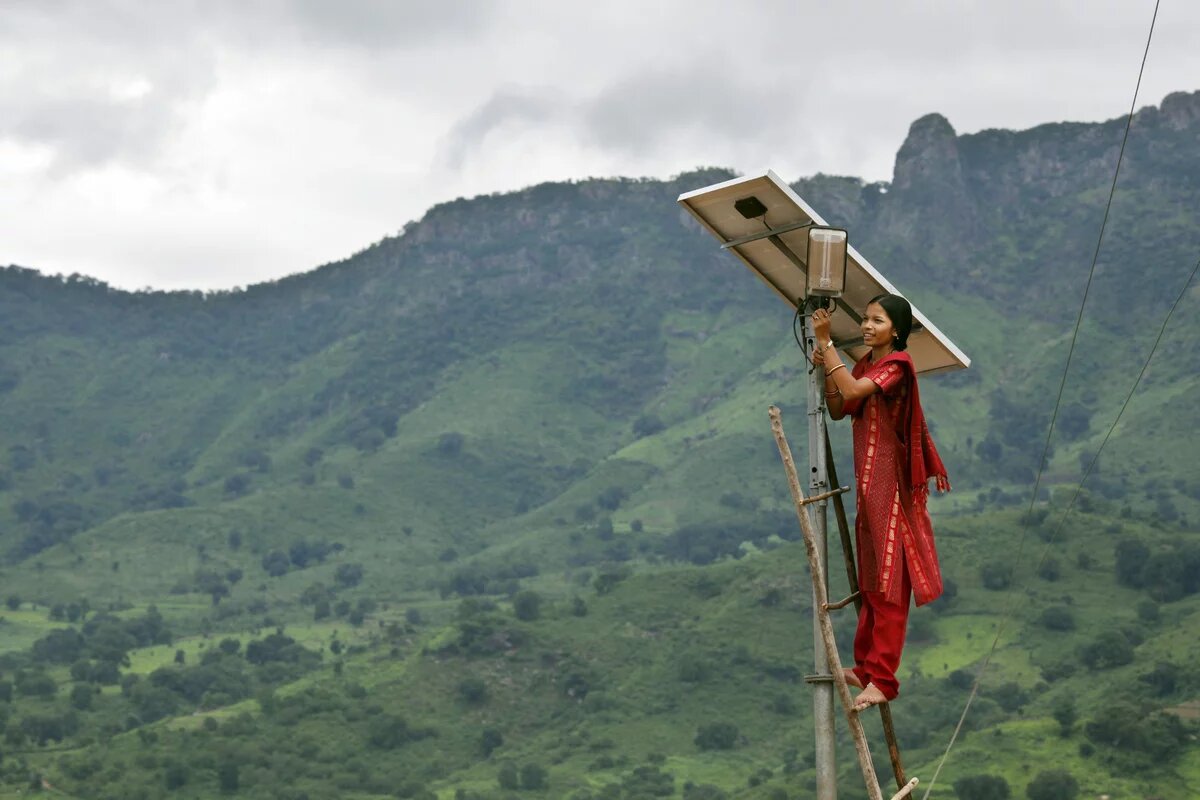
As a result of the climate change India and South Asia will likely have a huge economic, social, and environmental damage. Therefore climate solutions must be considered in national climate policy.
India has “an unfinished development agenda” of lifting 276 million people (living below $1.25 per day on purchasing power parity) out of the poverty trap; India needs 25 million new housing units for around 38 million people by 2030, and 200–300 million people in India (20–25 percent of the total population) lack electricity access. The list of challenges can be extended at will. The progress on this agenda will decide whether the Modi government can continue after the remaining four years in power or not. Though faster economic growth is the preferred approach to close development gaps toward a “sustainable lifestyle,” the frequent climate-induced disasters in the form of floods in Jammu and Kashmir and the North Eastern states; heatwaves in Central India; early hail and storms affecting standing crops of wheat; and ongoing drought in Maharastra are hitting the agrarian economy, threatening its ambitious economic growth aspirations. The government’s aspirations to have human development on par with EU countries could be difficult to achieve in climate-constrained ecosystems.
A recent Asian Development Bank report highlighted that the impacts of climate change are likely to result in huge economic, social, and environmental damage to South Asian countries, compromising their growth potential and poverty-reduction efforts.[1] Thus, development as well as the necessary climate solutions must be considered in national climate policy. The recently submitted Intended Nationally Determined Contribution (INDC) to the UN Framework Convention on Climate Change (UNFCCC) on October 1, 2015, is a reflection of balancing two priorities – maintaining the pace of growth toward bridging the development gap and constituting a climate-responsive and resilient society. While sharing the efforts being made on the domestic front in terms of pursuing low-carbon pathways, India emphasizes its priority toward building “climate-resilient sectors” through adaptation plans.
The climate action plan (INDC) of India for the period from 2020 to 2030 starts with the vision to achieve ‘Climate Justice’. It indicates the government’s commitment to its own citizens to provide a climate-resilient, sustainable lifestyle as well as the commitment to global citizens in supporting efforts to address climate threats through the reduction of greenhouse gases released into the atmosphere. The action plan submitted to the UNFCCC commits to reduce the emissions intensity of India’s GDP by 33 to 35 percent by 2030 compared to 2005 levels; achieve about 40 percent cumulative electric power installed capacity from non-fossil-fuel-based energy resources by 2030 (this commitment is conditional to the provision of Means of Implementation); create additional carbon sinks of 2.5 to 3 billion tons of CO2 equivalent through additional forest and tree cover by 2030; and to better adapt to climate change by enhancing investments in development programs in sectors vulnerable to climate change, particularly agriculture, water resources, the Himalayan region, coastal regions, health, and disaster management.
Though the numbers to mitigate carbon from India’s economy are on the lower side of representing a fair share (in a medium equity setting, 42 percent emissions intensity of GDP[2] would be a fair share), it is reckoned that the target of 175 gigawatts of renewable energy installed by 2022 would be key in achieving much more than has been officially committed. The rough calculations indicate that achieving 300 gigawatts of renewable energy by 2030 is possible if the right kind of investment frameworks and policy support is put in place for 2022 renewable energy targets. It is expected that by adding 175 gigawatts of renewable energy over the next seven years, India would easily achieve 36 percent of electric-power installed capacity from non-fossil fuels. The analysis of the INDC shows that India can do more to support the global temperature limit of 2 degrees Celsius but would need financial and technological support. The energy planners in India are facing a dilemma similar to the one Germany experienced after announcing the phase-out of nuclear power. In the absence of international support for renewable energy, we fear that India might continue to follow the unsustainable path of increased dependence on coal and nuclear energy to achieve and maintain energy security.
[1] M. Ahmed and S. Suphachalasai, 2014, “Assessing the Costs of Climate Change and Adaptation in South Asia,” Manila: Asian Development Bank.
